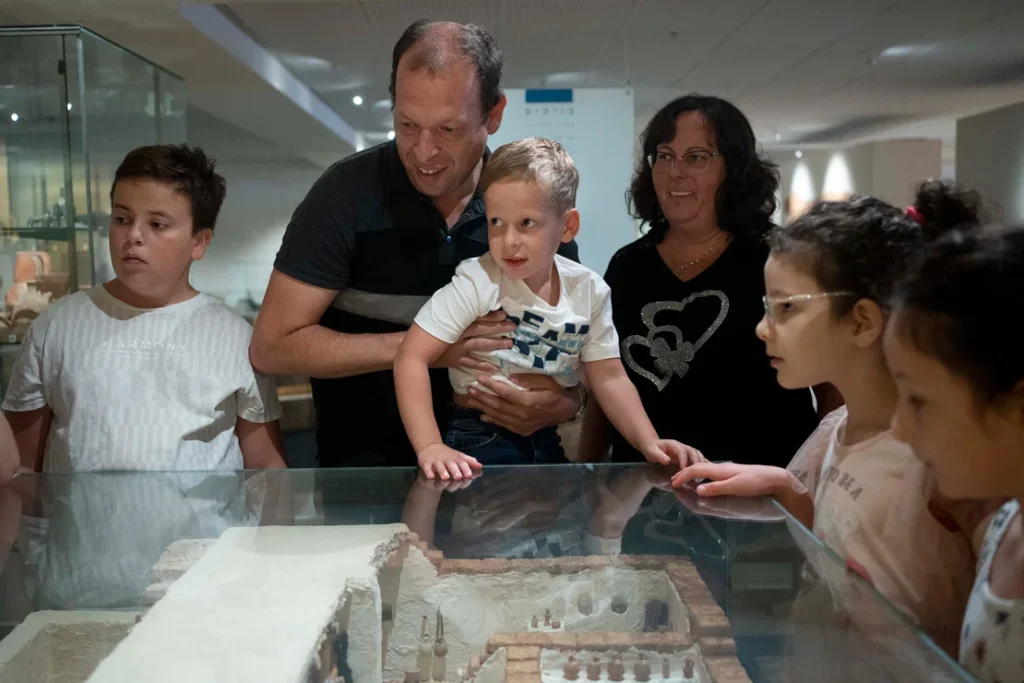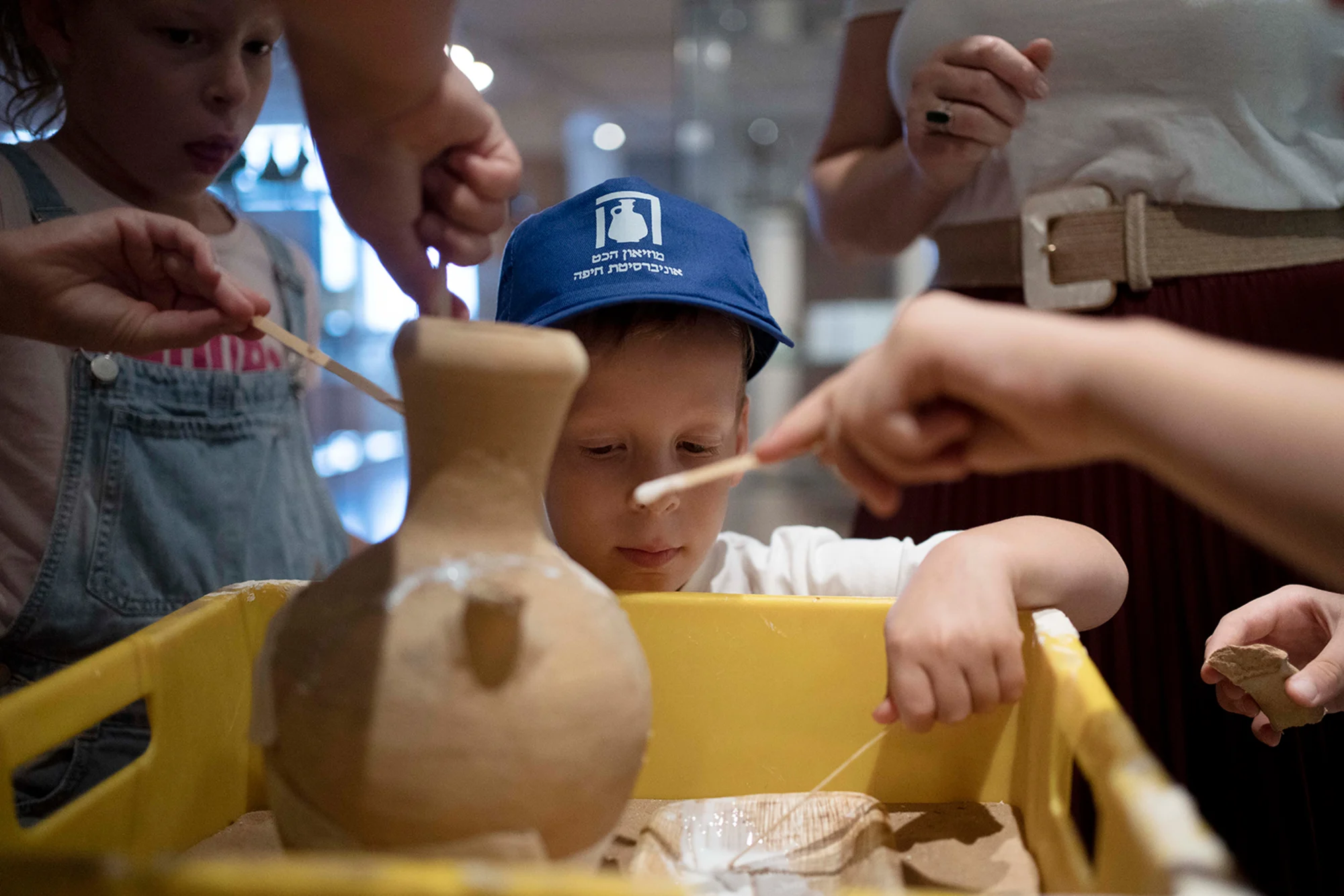Picture this: a 4-year-old boy, wide-eyed with curiosity, wanders through an Israeli museum filled with ancient treasures. His mom looks away for just a second, and then—crash! The sound echoes through the hall. A 3,500-year-old clay jar, an artifact that survived millennia, is now in pieces on the floor. And standing over the shards is little Ariel Geller, his face a mix of shock and fear.
This is every parent’s worst nightmare, right? You take your kid to a museum for a nice, educational day out, and suddenly you’re in the middle of a disaster. Anna Geller, Ariel’s mom, was no exception. She was probably just trying to keep her three kids entertained, maybe explaining the history of the Bronze Age jar they were looking at. But all it took was one moment of distraction. One second of turning her attention away, and boom—her son had done what thousands of years couldn’t do. He broke the jar.
“I heard this huge crash,” Anna recalls, “and when I turned around, I saw Ariel standing there, just stunned. He didn’t mean to break it. He’s a curious kid, and he just wanted to see what was inside.” But of course, that curiosity came with a hefty price tag—not that the museum was going to send them the bill.
The jar that Ariel broke wasn’t just any old relic. It was a 3,500-year-old piece from the Bronze Age, discovered intact and perfectly preserved. For 35 years, it had been on display at the Hecht Museum in Haifa, Israel, one of the few complete jars of its kind. It likely once held wine or oil, connecting us to ancient lives long gone. And now, it was just a pile of broken clay on the museum floor.
You can imagine the immediate panic. Anna probably rushed over, trying to calm Ariel down, while her heart pounded in her chest. Alex Geller, Ariel’s dad, was just as horrified. “Please let that not be my child,” he thought as he heard the crash. But it was. It was definitely his child.
Now, this could have been a full-blown crisis. The museum could have banned the family for life or sent them a massive bill. But instead, something unexpected happened. The staff at the Hecht Museum took a different approach. They didn’t scold the Gellers or make them feel terrible. They saw it as a learning opportunity. Instead of freaking out, they invited the family back for a special visit.

When the Gellers returned, it wasn’t just to apologize or to gawk at the damage. Ariel even brought a gift of his own—a clay vase he made himself. The museum staff greeted them warmly, showing Ariel how the jar was being restored. Experts were using 3D technology and high-resolution videos to piece it back together, turning what could have been a disaster into a fascinating lesson for Ariel and his siblings.
And this isn’t just a cute story about a little boy and his accidental destruction of an ancient artifact. It’s a reminder of something deeper: museums, and the objects they hold, aren’t just about preserving the past in some untouchable way. They’re about connecting us to that past, making history feel real and tangible. The Hecht Museum’s philosophy is that visitors should be able to interact with history, to explore without glass barriers between them and the artifacts. Yes, sometimes things break, but that’s part of the risk—and the reward.
Roee Shafir, a restoration expert at the museum, summed it up perfectly. “I like that people touch. Don’t break, but touch things—it’s important,” he said. For him, and for the museum, the jar breaking wasn’t a total tragedy. It was a chance to show how these objects can be restored, how history isn’t just something frozen in time but something that can be repaired, studied, and understood.
The Geller family, who live in Nahariya, a town in northern Israel, have been spending their summer visiting museums and taking day trips around the country. It’s a way to escape the tensions and conflicts that have gripped their region for over 10 months. When they visited the Hecht Museum, they were looking for a bit of peace, a distraction from the stress back home. Instead, they found themselves in the middle of an ancient artifact disaster.
But the museum’s response turned that disaster into something positive. It showed Ariel, and probably his parents too, that mistakes happen. What matters is how we handle them. Instead of being banned or shamed, Ariel was welcomed back, shown the process of restoration, and given a hands-on lesson in history. His older siblings were especially interested in how the jar was being pieced back together, fascinated by the technology and care involved in the process.
As for the jar itself? It’s on the road to recovery. Shafir and his team are carefully reassembling it, piece by piece. Because the fragments are all from the same jar, the restoration should be relatively straightforward. Soon, the jar will be back on display, not as a pristine relic but as a reminder of both its ancient past and its modern mishap.
This story, in the end, is about more than just a broken jar. It’s about curiosity, accidents, and the kindness of strangers. It’s about how history isn’t just something we study but something we interact with—sometimes a little too directly. And it’s about how, even when things break, they can be put back together, often stronger and more interesting than before.
So, the next time you’re in a museum, take a moment to appreciate the artifacts around you. And maybe keep a closer eye on your kids. But also remember that if something does go wrong, it’s not the end of the world. Sometimes, it’s just the beginning of a new story.
4o

